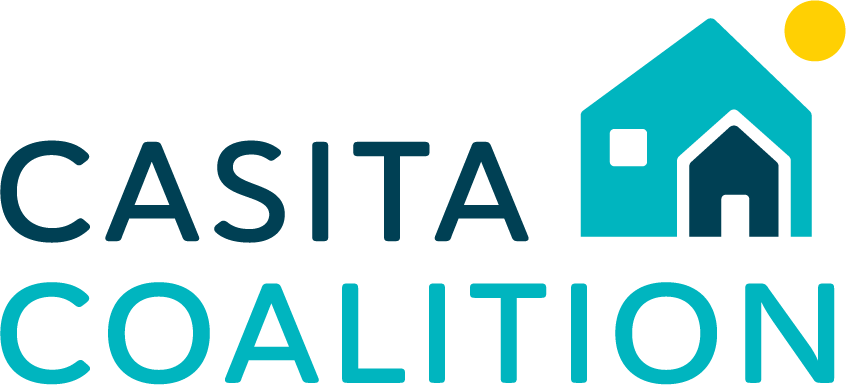How to Make Your Housing Element ADU-Friendly
It’s that time of the decade again - Housing Element season! As jurisdictions dig into their housing data and RNHA numbers and formulate a plan to provide deeply needed housing stock, we hope to see significant consideration for Accessory Dwelling Units. ADUs are one of the most successful forms of housing being built in California today - they’re naturally affordable, integrate into existing neighborhoods, and have a track record of success in our state.
To continue this track record of success, local jurisdictions have to do more than the minimum to provide homeowners with the support they need, and that process starts with an ADU-friendly Housing Element. These are our recommendations for going above and beyond the minimum and ensuring the success of ADUs in every jurisdiction:
Start with a high bar and adjust accordingly.
It might be tempting to put a clause into your Housing Element that allows for minimal ADU programming in the first two years of the cycle, then up the ante two years in if you aren’t yet hitting your projected ADU numbers. We want to encourage jurisdictions to hold themselves to a higher standard during the first two years - and then up the ante even more after. This is in the direct interest of local governments: more ADU programming right out the gate will help governments meet RHNA goals and affirmatively further fair housing. Starting with a high level of ADU programming is the best way to encourage ADU adoption and more production of this unique housing type.
Make a commitment to educating homeowners about ADUs from day one.
One of the main barriers to ADU adoption is lack of information and homeowner education on the subject. Many homeowners are interested in building an ADU, and tangentially aware of how they might be able to do so, but need to bridge that gap between broadly interested and committed to building. An easy-to-navigate ADU website with universal checklists saves staff time by linking to resources and answering common questions up front. The City of San Jose created a video-guided application tour to walk applicants through the steps. We encourage local jurisdictions to create content or in-person workshops for homeowners or collaborate with an organization that provides free ADU information. Many of Casita Coalition’s members partner with cities and counties to provide free information and education to homeowners, like the Napa Sonoma ADU Center and Symbium.
Meet your goals with policy changes that make ADUs more accessible.
One of the easiest ways to meet your ADU goals is to adopt ADU-friendly policy changes. Casita Coalition’s Best Practices Guide has plenty of information on ADU policy changes that have made a big difference in communities across our state, and has been cited by the Terner Center in their recent report on ADUs and equity as an excellent resource for how to best align local government resources to help ADU development, especially to improve equitable outcomes. Download the guide here.
Here are just a few other recommendations you might consider:
Allowing two-story ADUs and larger ADUs
ADUs on corner lots (or specifically having a four feet setback on the street-facing side)
Front yard setbacks that match the main house
Reduced side or rear yard setbacks
No parking replacement required for any ADUs
Greater FAR (floor area ratio)
Allow JADUs in an attached garage and define “attached” as “connected by a common wall, or by a common roof, covered walkway, carport or garage, not more than twenty feet (20') wide.”
Allow more ADUs than permitted by state law
Whenever possible, alleviate unnecessary costs and complex logistics.
The most significant barrier to ADU adoption across the State - and the country - is a lack of funds to build one and the logistics involved. It can be difficult for homeowners to finance the construction of an ADU, let alone all the associated permits and fees. Luckily, there are things your jurisdiction can do to alleviate that burden.
For example, many homeowners struggle with the cost and logistics of having a soils report or even a soils waiver completed for their ADU project. Soils waivers alone generally cost over $1000 and can be difficult to find a professional to complete in many areas. This requirement, and other requirements, might not be necessary for an ADU build, and could be waived by your jurisdiction in some cases.
Similarly, sewer connection fees, while generally waived for ADUs less than 500 sqft, can be a significant financial burden for homeowners who are building larger ADUs. One common example: a sanitation district that charges approximately $1,000 per 100 sqft over 500 ft. An improvement on this could be a waiver of the fee for ADUs less than 800 sqft, and lowering the fee for ADUs over 800 sqft.
Want to learn more about how to make your Housing Element ADU friendly? Here’s some further reading to check out:
Napa Sonoma ADU’s Accessory Dwelling Unit Housing Element Recommendations
Partnership for the Bay’s Future and Chan Zuckerberg Initiative’s Bay Area Housing Readiness Report
Welcome, new members!
Casita Coalition welcomed 6 new business members in July, including
Welcome to Casita Coalition! We look forward to ongoing conversation and collaboration with you all!
To join Casita Coalition, click here.
Member News & Events
Terner Center’s latest policy brief examines the barriers to ADU construction among low- and moderate-income BIPOC homeowners in California. Casita Coalition co-hosts a webinar with Terner Center to share this report on August 26th–see our Events page.
Members - to be featured or make announcements in an upcoming blog post, email sophia@sinsheimerdigitalmedia.com with details.
